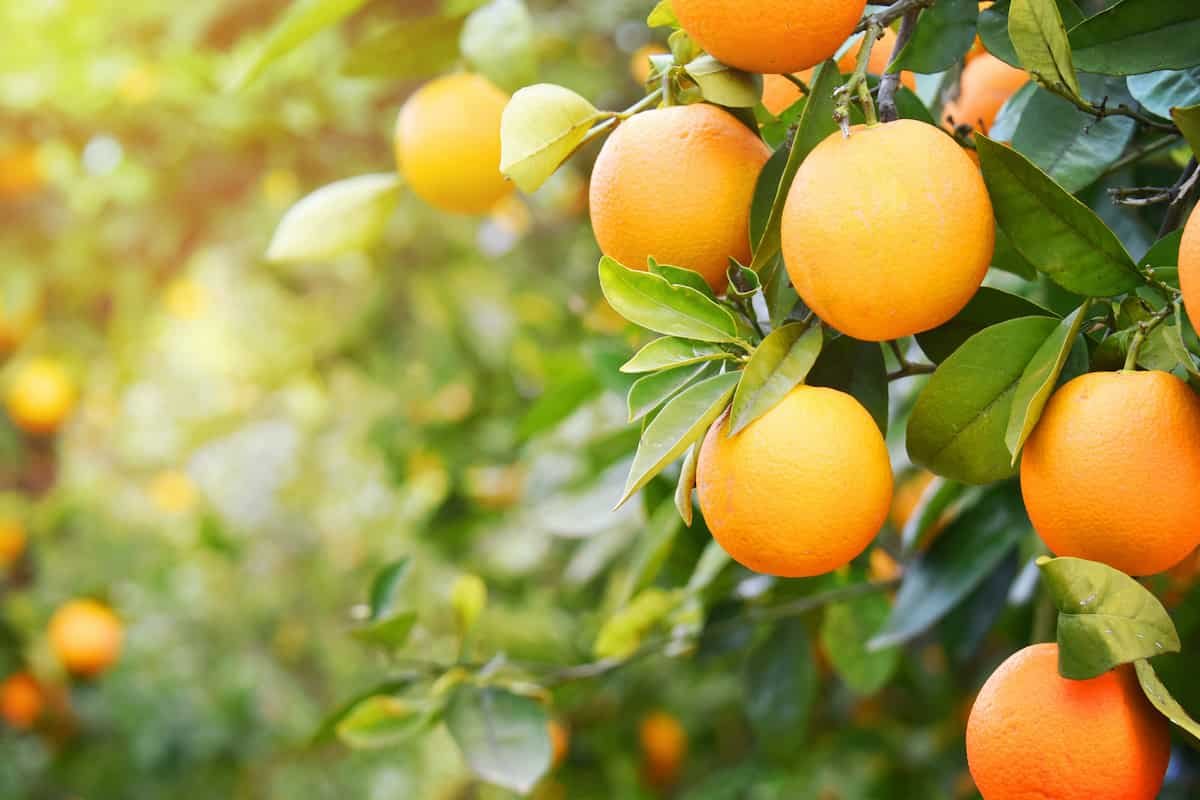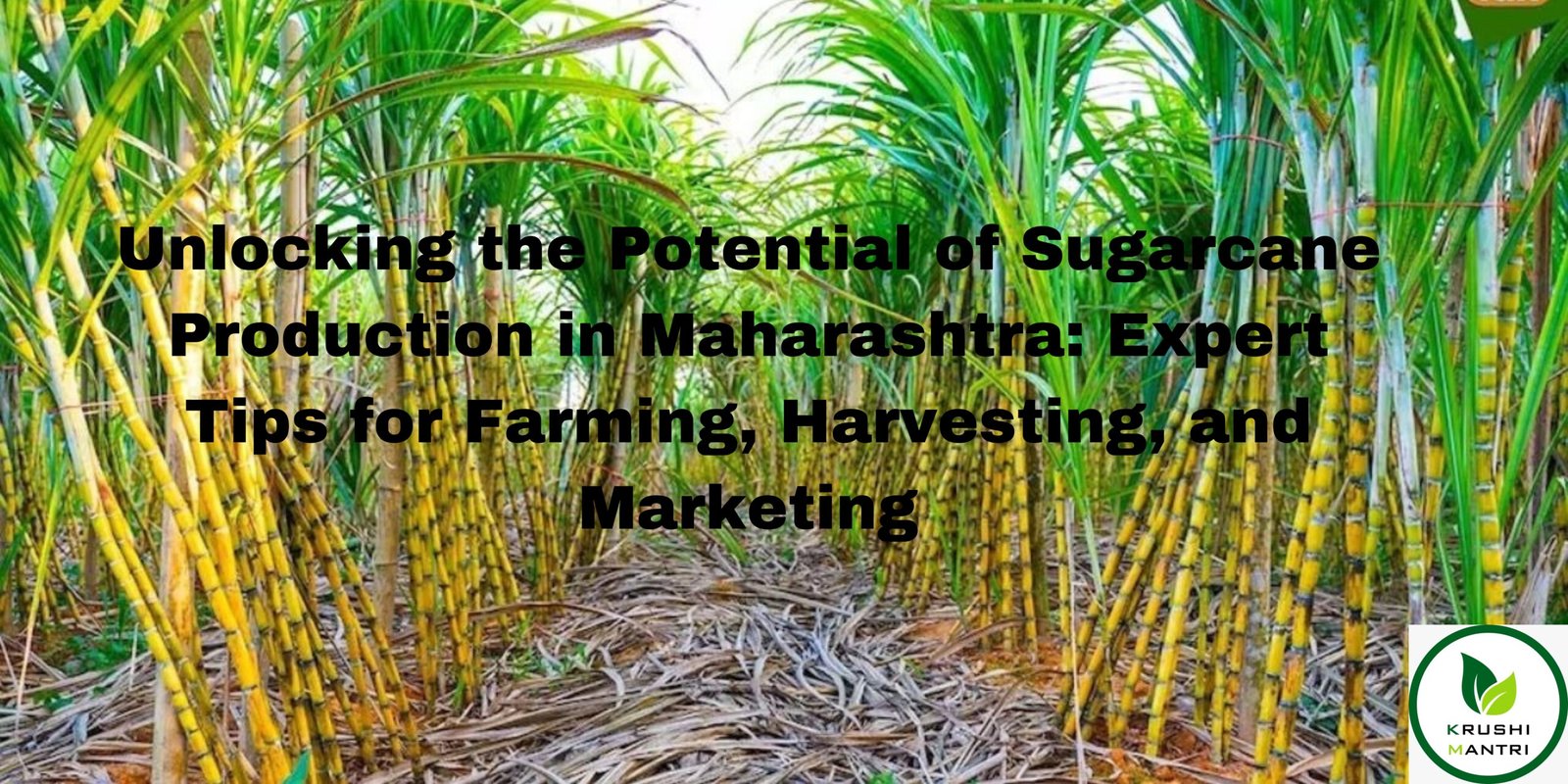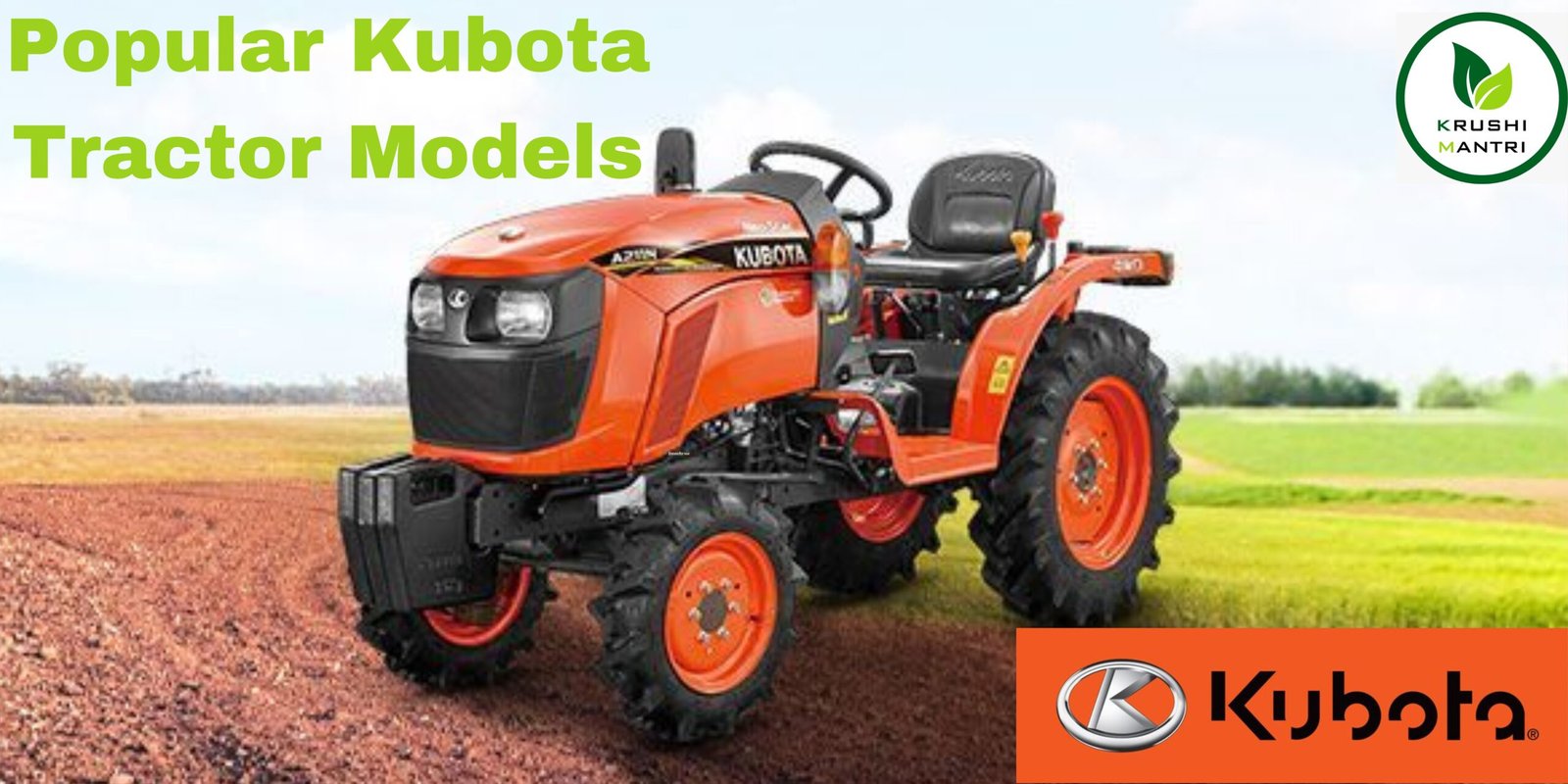Best Practices for Sweet Orange Farming in India
Greetings, I am Krushimantri, and I am excited to share my personal experience and knowledge about Orange Cultivation in India with you. India’s diverse and extensive agricultural practices make it an ideal location for cultivating various crops, including sweet oranges. These juicy and nutritious fruits are not only consumed fresh but are also used in the production of numerous products such as juices, marmalades, and candies. The cultivation of sweet oranges has a rich history in India and has become a significant source of income for farmers across the country.
In this blog post, we will explore the world of sweet orange cultivation in India, from its historical significance to present-day practices and innovations that have made it a successful crop. We will discuss the cultivation techniques, best practices, and challenges faced by farmers. We will also analyze the market opportunities and economic impact of sweet orange farming in India. So, get ready to dive into the juicy world of sweet orange cultivation and discover the secrets of this delicious fruit that has become an integral part of India’s agricultural landscape.
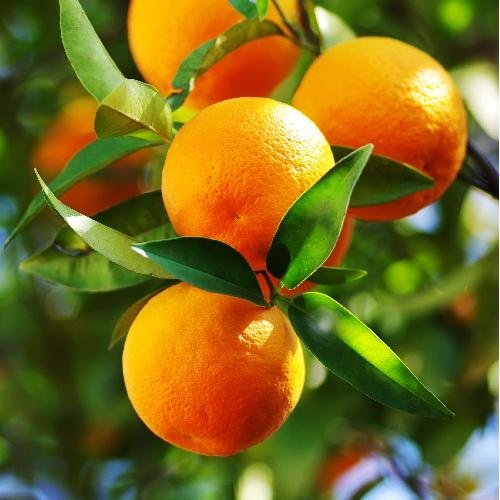
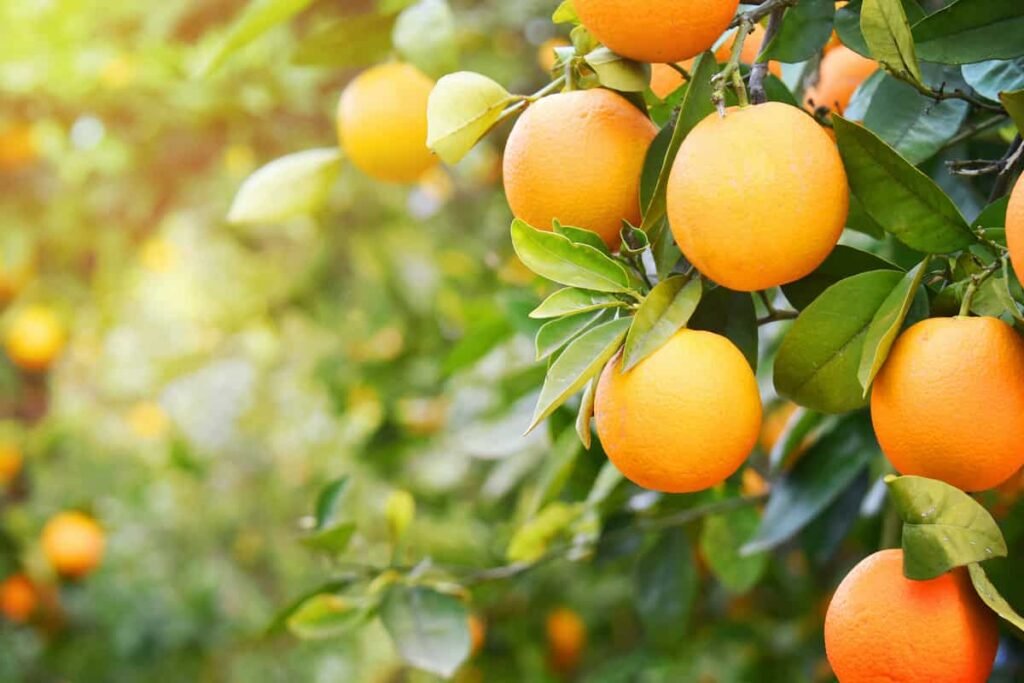
Types of Sweet Oranges in India
Sweet oranges are one of the most beloved citrus fruits cultivated in India, with numerous varieties that flourish in different agro-climatic regions across the nation. If you’re interested in learning more about the various types of sweet oranges grown in India, take a look at some of the most popular ones below:
Nagpur Orange:-
- Characteristics
- Thin, smooth, and easy-to-peel skin
- Seedless or with very few seeds
- Bright orange color
- Sweet, juicy, and pulpy
- Rich in vitamin C and other essential nutrients
- Production in India
- Nagpur oranges are mainly grown in the Nagpur region of Maharashtra, which is known as the “Orange City.”
- Nagpur oranges are the most cultivated and commercially important variety of oranges in India, accounting for nearly 40% of the country’s total orange production.
- Nagpur oranges are harvested from December to March, and the peak season is from January to February.
- Nagpur oranges are exported to countries such as the United Arab Emirates, Saudi Arabia, and Kuwait, and are also widely consumed domestically, both fresh and processed into products such as juice, marmalade, and candy.
Kinnow Orange:-
- Characteristics
- Kinnow orange is a hybrid citrus fruit, a cross between King and Willowleaf oranges.
- It has a bright orange, easy-to-peel skin, and a sweet, juicy pulp with a high juice content.
- It is seedless or has very few seeds, making it convenient for consumption.
- The fruit is rich in vitamin C, antioxidants, and other essential nutrients.
- Production in India
- Kinnow oranges are mainly grown in the Punjab region of India, covering around 80% of the total production.
- Other states where kinnow orange cultivation is prevalent include Haryana, Rajasthan, and Uttar Pradesh.
- The fruit is usually harvested between December and February, making it a late-maturing citrus variety.
- India is one of the largest producers of kinnow oranges in the world, with over 1 million metric tons produced annually.
- Kinnow oranges are not only consumed fresh but are also used for making juice, marmalade, and other processed products.
- The export of kinnow oranges from India has also been growing in recent years, with the fruit being in high demand in the Middle East and Southeast Asia.
Valencia Orange:-
- Characteristics
- Valencia oranges have a thick, rough skin that is difficult to peel.
- The flesh of Valencia oranges is sweet and juicy, with a few seeds.
- They are a late-maturing variety, with a harvest season that typically starts in March and lasts until June.
- Valencia oranges are known for their high vitamin C content, making them a nutritious addition to any diet.
- Production in India
- Valencia oranges are mainly grown in the southern states of Tamil Nadu and Andhra Pradesh in India.
- The cultivation of Valencia oranges requires a warm and dry climate, with well-drained soils.
- The production of Valencia oranges in India has increased in recent years, with more farmers turning to this variety as a profitable crop.
- The demand for Valencia oranges in the domestic and export markets is also growing, making it an attractive option for farmers looking to diversify their crops.
Blood Orange:-
- Characteristics
- Blood oranges have a unique reddish-orange flesh, which is caused by the presence of anthocyanin pigments.
- The color of the flesh can vary from a light pink to a deep red, depending on the variety and the maturity of the fruit.
- Blood oranges have a sweet, slightly tart flavor, with a hint of raspberry or strawberry.
- They are rich in Vitamin C, folate, and other antioxidants, making them a healthy addition to any diet.
- Production in India
- Blood oranges are primarily grown in the colder regions of India, such as the Himalayan foothills and the Nilgiri hills.
- The cultivation of blood oranges in India is still limited, and they are not as widely grown as other citrus fruits like sweet oranges or lemons.
- However, there has been an increase in the demand for blood oranges in recent years, and some farmers are starting to cultivate them as a niche crop.
- Some of the popular blood orange varieties grown in India include Moro, Tarocco, and Sanguinello.
- With the right climatic conditions and cultivation techniques, blood oranges have the potential to become a profitable crop for farmers in India.
Jaffa Orange:-
- Characteristics
- Thin, smooth skin that is easy to peel
- Few seeds and a sweet, juicy pulp
- Rich in Vitamin C and other essential nutrients
- Distinctive aroma and flavor, with a balance of sweetness and tanginess
- Production in India
- Jaffa oranges are mainly grown in the state of Telangana, with smaller cultivation in other parts of India
- The ideal climate for Jaffa oranges is a warm, dry climate with ample sunshine and moderate humidity
- The harvesting season for Jaffa oranges in India is from December to March, with peak production in January and February
- India is a major exporter of Jaffa oranges, with countries like the UAE, Saudi Arabia, and Oman being significant markets.
Sathgudi Orange:-
- Characteristics
- Sathgudi Orange is a medium-sized fruit with a thin, smooth, and easy-to-peel skin.
- The fruit has a sweet, juicy, and pulpy flesh with a high juice content.
- It is seedless or has very few seeds, making it a preferred choice for consumption and processing.
- The pulp of Sathgudi Orange is rich in vitamin C, dietary fibers, and other essential nutrients.
- Production in India
- Sathgudi Orange is primarily grown in the southern states of India, such as Tamil Nadu and Andhra Pradesh.
- The fruit is mainly cultivated in the districts of Madurai, Dindigul, and Sivaganga in Tamil Nadu.
- The warm and humid climatic conditions of these regions are favorable for the cultivation of Sathgudi Orange.
- The harvesting season for Sathgudi Orange in India is from November to March, and the fruit is sold both in domestic and international markets.
- Sathgudi Orange is popularly consumed fresh, used for making juices, jams, and other processed products.
Mosambi Orange:-
- Characteristics
- Mosambi orange is a juicy and seedless variety of sweet orange with a thin, smooth, and bright greenish-yellow skin.
- The flesh of the fruit is pale yellow and has a sweet and tangy flavor with a citrusy aroma.
- It is rich in vitamin C, antioxidants, and dietary fiber, making it a healthy fruit choice.
- Production in India
- Mosambi orange is primarily grown in the central and western regions of India, including Maharashtra, Gujarat, and Andhra Pradesh.
- Maharashtra is the largest producer of Mosambi orange in India, with the Nagpur and Amravati regions being the major production centers.
- Gujarat and Andhra Pradesh also have significant Mosambi orange cultivation, with the cities of Valsad and Amravati being major production areas, respectively.
- Mosambi orange is a popular fruit in India and is consumed fresh as well as in the form of juices, candies, and jams. It is also exported to other countries.
Batavian Orange:-
- Characteristics
- Also known as Bitter Orange or Seville Orange.
- Has a thick, rough, and deeply textured skin.
- Pulp is bitter and less juicy compared to sweet oranges.
- High in vitamin C and other nutrients.
- Used primarily for making marmalades, jams, and other culinary purposes.
- Production in India
- Batavian Orange cultivation is not very widespread in India, but it is grown in some parts of the country, including the Northeastern region and Kerala.
- The fruit is harvested during the winter season, from December to February.
- Production is relatively low compared to other citrus crops such as sweet orange and kinnow.
- Batavian oranges are primarily grown for local consumption and processing into marmalades and other products.
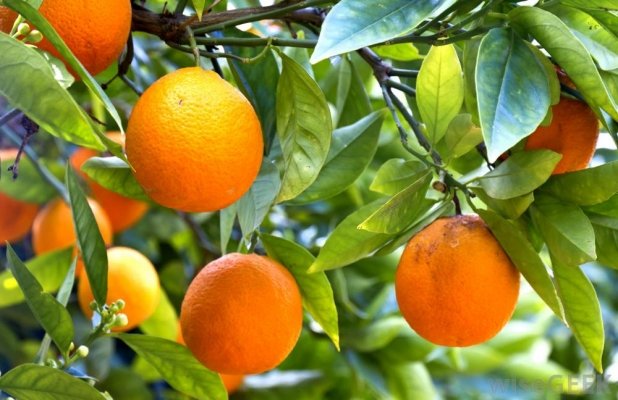
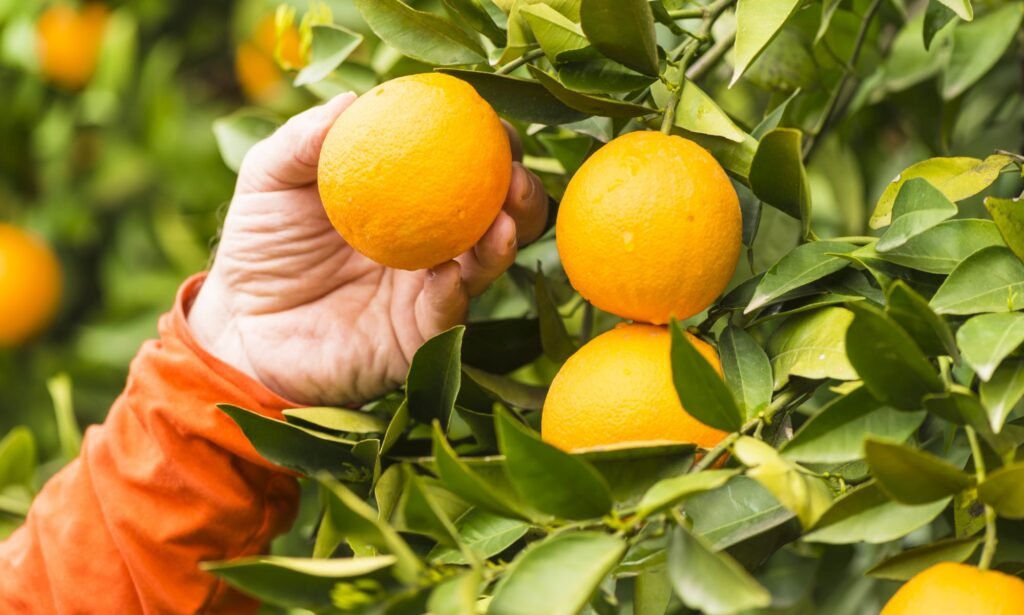
Read:- Maharashtra Farmer Success Story (Rs. 19 Lakh)
Requirements for Sweet Orange Cultivation in terms of Technical
Soil:-
The soil requirements for sweet orange cultivation in India are as follows:
- Soil type: Sweet oranges thrive in well-drained soils that are rich in organic matter. Sandy loam soils are ideal, but they can also be grown in clay loam and loamy soils.
- Soil pH: The optimal pH range for sweet orange cultivation is between 6.0 and 7.5. If the soil is too acidic or alkaline, it can affect the growth and yield of the crop.
- Soil fertility: Sweet oranges require a soil that is rich in nutrients, especially nitrogen, phosphorus, and potassium. Organic manure, compost, and fertilizers are used to maintain soil fertility.
- Soil texture: The soil should have a good water-holding capacity, as sweet oranges require adequate moisture for their growth and development. However, the soil should not be waterlogged or poorly drained, as it can lead to root rot and other diseases.
- Soil drainage: Good soil drainage is essential for sweet orange cultivation, as waterlogging can cause root damage and reduce the yield of the crop.
- Soil temperature: Sweet oranges require a warm soil temperature for their growth and development. The optimal soil temperature for sweet orange cultivation is between 20°C and 30°C.
- Soil depth: The soil should be deep enough to allow the roots to grow and absorb nutrients and moisture. A minimum depth of 50 cm is required for sweet orange cultivation.
Climate:-
The climate requirements for sweet orange cultivation in India are as follows:
- Sweet oranges grow best in a warm and humid climate.
- The ideal temperature range for sweet orange cultivation is between 15°C to 38°C.
- The crop requires a minimum of 8 hours of bright sunlight per day for optimum growth and yield.
- Sweet oranges require well-drained soil with a pH range of 5.5 to 7.5.
- The crop is sensitive to frost and cannot withstand extreme temperatures, particularly during flowering and fruiting.
- High humidity levels and frequent rainfall during the fruiting season can lead to fruit drop and fungal diseases.
- The agro-climatic zones suitable for sweet orange cultivation in India include the subtropical regions of Punjab, Haryana, Uttar Pradesh, and Himachal Pradesh, as well as the tropical regions of Maharashtra, Tamil Nadu, and Andhra Pradesh.
Planting Material
Here are the planting material requirements for sweet orange cultivation in India
- The preferred planting material for sweet orange cultivation is budded or grafted plants.
- Budded or grafted plants are preferred as they produce a more uniform and superior quality fruit compared to seed-grown plants.
- Budded or grafted plants can be obtained from a reliable nursery or can be raised by budding or grafting on rootstocks grown in the nursery.
- Rootstocks used for sweet orange cultivation should be healthy, disease-free, and suitable for the soil and climatic conditions of the region.
- The recommended rootstocks for sweet orange cultivation in India are Rangpur lime, Cleopatra mandarin, and trifoliate orange.
- The planting material should be of the desired variety, and it should be free from any pests, diseases, or physical damage.
- The ideal age of the planting material should be between 8 and 12 months, and it should have a well-developed root system and a healthy shoot.
- The planting material should be transported carefully and handled gently to avoid any damage to the roots or the shoot.
- The planting material should be planted in well-prepared soil, with adequate spacing and proper orientation to maximize sunlight exposure and air circulation.
- After planting, the planting material should be watered adequately and regularly, and appropriate care should be taken to protect it from pests and diseases.
Preparation of Lands
The preparation of lands requirements for sweet orange cultivation in India includes the following:
Site Selection:
- Choose a site with well-draining soil, as sweet oranges do not tolerate waterlogged conditions.
- The site should have adequate sunlight exposure, preferably with south or southeast orientation.
Soil Preparation:
- Conduct a soil test to determine the soil fertility and nutrient requirements.
- Prepare the land by removing weeds, rocks, and other debris.
- Add organic manure, compost, and other soil amendments based on the soil test results.
- Use plowing and harrowing to ensure proper soil tilth and texture.
Layout and Planting:
- Design the layout of the orchard, taking into consideration the spacing requirements for sweet orange trees.
- Dig planting holes at least one meter deep and one meter wide.
- Plant the trees during the rainy season or just before the onset of the monsoon.
- Water the trees immediately after planting.
Irrigation and Drainage:
- Provide proper irrigation facilities, such as drip or sprinkler systems, to ensure consistent moisture levels.
- Ensure proper drainage to prevent waterlogging and soil erosion.
Fertilization and Pest Control:
- Apply fertilizers at regular intervals based on the soil test results and tree growth stages.
- Implement pest and disease management practices, including the use of organic and chemical control measures.
By following these preparation of lands requirements, sweet orange growers in India can establish healthy and productive orchards.
Planting Time and Spacing
The planting time and spacing requirements for sweet orange cultivation in India are as follows:
Planting Time:
- In India, sweet orange cultivation is usually done during the monsoon season, from June to September.
- The ideal time for planting sweet orange trees is at the onset of monsoon rains.
- Planting during the rainy season ensures good growth and establishment of the young plants.
Spacing Requirements:
- The spacing between sweet orange trees depends on the cultivar, rootstock, and soil type.
- In general, sweet orange trees are planted at a spacing of 6 to 8 meters between rows and 5 to 7 meters between trees.
- In high-density planting systems, trees can be spaced closer, such as 4 to 5 meters between rows and 2 to 3 meters between trees.
- Proper spacing ensures adequate light penetration, air circulation, and access to nutrients and water for the plants.
- The spacing should also allow for the use of machinery and equipment for cultivation, pruning, and harvesting.
Manures and Fertilizers per Plant
Here are the manures and fertilizers per plant requirements for sweet orange cultivation in India:
Manures:
- Farmyard manure or compost: 15-20 kg per plant annually
- Vermicompost: 5-10 kg per plant annually
Inorganic Fertilizers:
- Nitrogen: 500-600 grams per plant per year, applied in 2-3 split doses (June, October, and February)
- Phosphorus: 300-400 grams per plant per year, applied in 2-3 split doses (June, October, and February)
- Potassium: 700-800 grams per plant per year, applied in 2-3 split doses (June, October, and February)
Micronutrients:
- Zinc: 50-60 grams per plant per year, applied in 2-3 split doses (June, October, and February)
- Boron: 15-20 grams per plant per year, applied in 2-3 split doses (June, October, and February)
Note: The above recommendations may vary depending on the soil type, age of the trees, and other factors. It is recommended to get the soil tested and follow the recommendations of experts. Also, it is essential to maintain a balance between organic and inorganic fertilizers for sustainable sweet orange cultivation.
Irrigation
Here are the irrigation requirements for sweet orange cultivation in India
- Sweet oranges require moderate to high amounts of water for their growth and fruit development.
- The water requirement of sweet oranges varies depending on the soil type, climate, and stage of growth.
- In general, sweet oranges require about 150-200 cm of water per year.
- Irrigation should be done at regular intervals to ensure a consistent supply of water to the plants.
- Drip irrigation is the most efficient method for sweet orange cultivation as it delivers water directly to the roots, reducing water loss through evaporation and runoff.
- Over-irrigation can lead to waterlogging and root rot, while under-irrigation can result in poor fruit quality and reduced yields.
- Irrigation scheduling should be adjusted during different stages of growth, such as flowering and fruiting, to ensure optimal growth and development.
- Rainwater harvesting and conservation practices should be adopted to supplement irrigation and improve water-use efficiency.
- Proper drainage should be ensured to prevent waterlogging and soil erosion, which can damage the roots and affect the plant’s overall health.
Pruning and Training
Here are the pruning and training requirements for sweet orange cultivation in India
Pruning Requirements:
- Pruning is done to remove weak, diseased, or dead branches to maintain the plant’s health and productivity.
- It is also done to improve fruit quality, size, and yield.
- Pruning is typically done during the post-harvest season, from February to March.
- The branches should be cut at an angle of 45 degrees, leaving a small stub to avoid water accumulation.
Training Requirements:
- Sweet orange trees need to be trained for proper growth and development.
- The training is done to create a strong framework for the tree, to support the weight of fruit.
- The training process involves removing the lower branches up to a certain height, leaving only the main scaffold branches.
- The main scaffold branches should be spaced evenly and should have a wide angle of attachment to the trunk.
- The tree should be trained to have a central leader, which is the main vertical stem of the tree.
Proper pruning and training of sweet orange trees in India can significantly improve fruit quality, size, and yield, as well as the tree’s overall health and productivity.
Intercrops
Here are the intercrop requirements for sweet orange cultivation in India
- Sweet orange cultivation in India requires intercropping with other crops to increase the yield and maximize land use.
- The intercrops should be chosen carefully, as they should not compete with the sweet orange trees for nutrients, water, and sunlight.
- Leguminous crops such as pigeon pea, cowpea, and green gram are suitable intercrops as they fix nitrogen in the soil, which benefits the sweet orange trees.
- Other suitable intercrops include ginger, turmeric, and black pepper, as they do not compete with sweet oranges for nutrients and have a shorter crop cycle.
- Avoid intercropping with crops that require frequent irrigation, as this may affect the quality and yield of sweet oranges.
- It is also essential to select intercrops that are compatible with the soil type and agro-climatic conditions of the region.
- Intercropping should be done during the early stages of sweet orange cultivation, and proper spacing should be maintained between the trees and intercrops.
- Adequate weed control measures should be taken to prevent weed competition with both the sweet orange trees and intercrops.
- Proper nutrient management practices, such as applying organic manure and fertilizers, should be followed to maintain the soil fertility and productivity.
- Intercropping can also provide additional income to the farmers, as they can sell the intercrop harvest in the local markets.

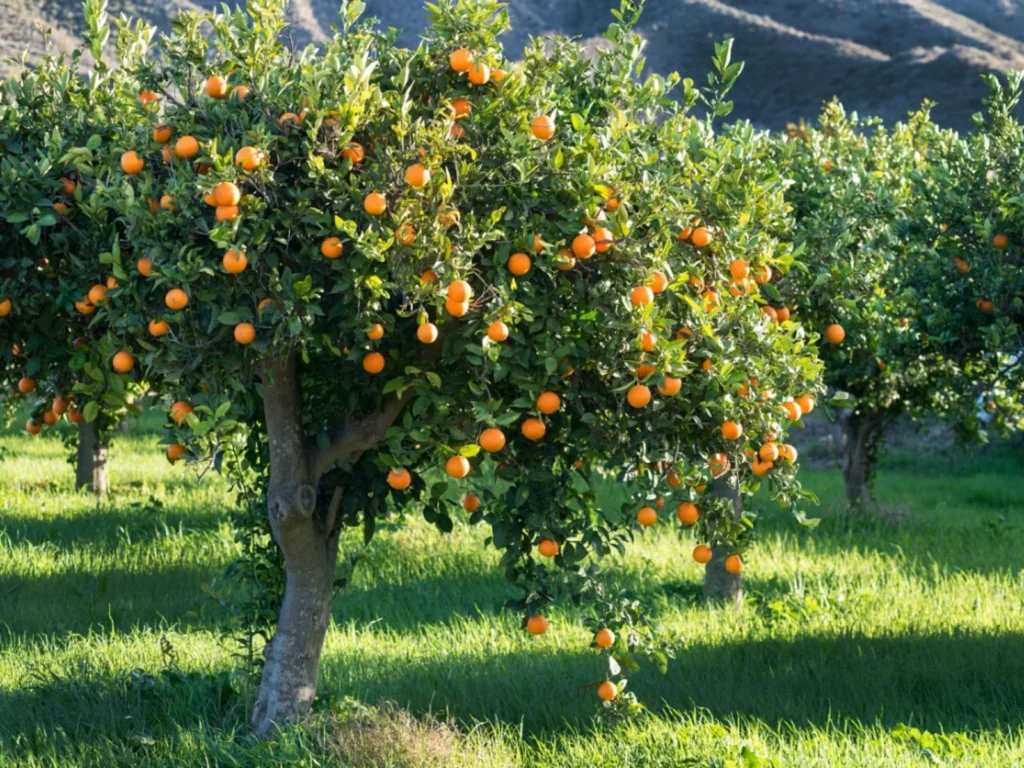
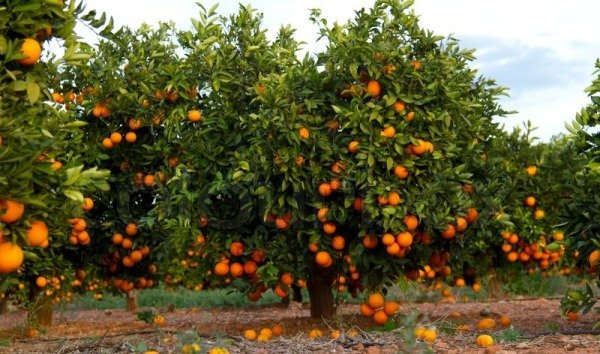
Bahar Treatment and it’s Need
Bahar treatment is an important cultural practice in sweet orange cultivation in India. It involves inducing flowering in the off-season by subjecting the trees to certain conditions. Here are the requirements for Bahar treatment in sweet orange cultivation:
- Age of Trees: The trees should be at least 6-7 years old and well-established before Bahar treatment is carried out.
- Nutrient Management: Proper nutrition management is essential for the success of Bahar treatment. The trees should be adequately fertilized with balanced doses of nitrogen, phosphorus, and potassium, along with other essential micronutrients.
- Pruning: Pruning is necessary to ensure uniform growth and development of the trees. Dead and diseased branches should be removed, and the canopy should be properly shaped to allow sunlight penetration.
- Irrigation: Proper irrigation is crucial for the success of Bahar treatment. Trees should be watered regularly and adequately, especially during the flowering period.
- Climate: Bahar treatment is most effective in regions with a warm and dry climate, such as Maharashtra, Gujarat, and Rajasthan.
- Timing: The ideal time for Bahar treatment is between mid-August to mid-September, when the temperature is high, and the humidity is low.
- Ethephon Application: Ethephon is a plant growth regulator that is applied to induce flowering in sweet orange trees. The appropriate dosage and method of application should be followed to ensure the desired results.
Overall, Bahar treatment is an important cultural practice that helps to increase the productivity and profitability of sweet orange cultivation in India.
Controlling of Fruit Drop
Controlling fruit drop is an important aspect of sweet orange cultivation in India to ensure a good yield and quality of fruits. Here are some of the requirements for controlling fruit drop in sweet orange cultivation:
- Proper irrigation and fertilization to maintain optimum soil moisture and nutrient levels.
- Regular pruning and training of the trees to maintain a balance between vegetative and reproductive growth.
- Timely application of plant growth regulators such as gibberellins, cytokinins, and auxins, which help in improving fruit retention and reducing fruit drop.
- Control of pests and diseases that can cause fruit drop, such as citrus psylla, citrus leaf miner, and citrus greening disease.
- Harvesting of fruits at the right maturity stage, as overripe or underripe fruits are prone to dropping.
- Adequate post-harvest management, including careful handling, sorting, and storage, to minimize mechanical damage and physiological disorders that can lead to fruit drop.
By implementing these requirements, sweet orange farmers in India can effectively control fruit drop and achieve a higher yield of quality fruits, leading to better returns on investment.
Read:- Profitable Goat Farming: An Investment Guide to Expenses and Earnings – No.1 Project Report
Pest Control
| Pest | Control Measures |
|---|---|
| Fruit Fly | 1. Set up fruit fly traps using protein-based attractants such as hydrolyzed protein or yeast. 2. Apply insecticides such as malathion, deltamethrin, or fipronil. 3. Practice field sanitation by removing infected or fallen fruits. |
| Citrus Psylla | 1. Use reflective mulch to repel psylla. 2. Spray insecticides such as imidacloprid or thiamethoxam during the nymph stage. 3. Introduce natural predators such as parasitic wasps and lacewings. |
| Scale Insects | 1. Apply horticultural oil sprays during the dormant season. 2. Use insecticides such as pyrethroids or organophosphates. 3. Encourage natural predators such as ladybugs and parasitic wasps. |
| Mealybugs | 1. Apply insecticides such as imidacloprid, thiamethoxam, or spirotetramat. 2. Use horticultural oil sprays during the dormant season. 3. Encourage natural predators such as ladybugs, lacewings, and parasitic wasps. |
| Whiteflies | 1. Use yellow sticky traps to monitor the population. 2. Apply insecticides such as imidacloprid, thiamethoxam, or spirotetramat. 3. Encourage natural predators such as ladybugs and parasitic wasps. |
These are some of the common pest control measures used in sweet orange cultivation in India. However, it is important to note that the choice of control measures may vary depending on the severity of the infestation and the specific conditions of the farm. Additionally, farmers must follow the recommended dosage and application procedures when using insecticides to avoid harmful residues and resistance development.
Read:- Sweet Success: How to Make a Profit of ₹160,000 with Honey Bee Farming
Harvesting
| Stage | Time | Process |
|---|---|---|
| Flowering | February-March | Appearance of white flowers on the tree. |
| Fruit Set | April-May | Formation of small green fruits on the tree. |
| Fruit Growth | June-July | Rapid growth of fruit size and development of juice content. |
| Fruit Maturation | September-December | Change in skin color from green to orange and the fruit reaches maturity. |
| Harvesting | December-March | Fruit is harvested when fully ripe and the skin turns orange, which varies depending on the variety. |
| Post-Harvesting | Immediately after harvesting | Sorting, grading, cleaning, and packing of fruits for transportation to the market or processing. |
It’s important to note that the harvesting time may vary depending on the region, climate, and variety of sweet orange grown. The above table provides a general timeline for sweet orange cultivation in India.
We hope this blog is vital for you; hence more information regarding any agriculture sector, stay tuned with Krushimantri.com
And more information regarding any travel, stay turned with urbanchats.com
